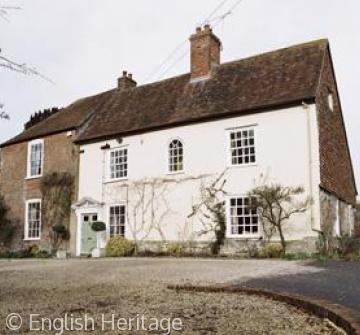The terms rectory and vicarage frequently cause confusion, since (like 'manor') they are colloquially used to denote a clergyman's house.
In their technical sense, the words refer to church endowments and clerical income. At their foundation, most churches were endowed with land and tithes which were meant to support the priest (or 'rector'), and which collectively made up the 'rectory'. Sometimes, however, this endowment was granted to a religious house, which consequently became an absentee corporate 'rector'. In these circumstances the bishop had to ensure that the parish church was properly served by a 'vicar', a word that literally means a substitute. Part of the church's income (referred to as the 'vicarage') was set aside to support him, made up sometimes of a cash stipend, and sometimes of tithes or land. The rest remained with the religious house, which was said to have 'appropriated' the rectory.
This distinction between rectors and vicars was important up to the 19th century, since vicars only ever received a part of the church's income. Even so, not all of them were necessarily poorer, since some parish churches were much better endowed than others. Consequently, some better-off vicars enjoyed higher standards of living than the worse-off rectors. A further complication came with the Reformation, when many rectories were acquired by laymen along with other monastic property. These people became known as 'lay rectors', and were entitled to the tithes and glebe rents formerly owned by the dissolved religious house. Nonetheless they were merely property owners, and had no connection with the running of the church or its religious life.
Rectory and vicarage houses, in the sense of parsonages for the resident clergyman, sometimes formed part of the church's original medieval endowment, sited usually (though not always) near the church itself. Some were quite substantial, and were often successively rebuilt on the same site, particularly after the Reformation when, for the first time, clergy required family homes. Provision of houses varied considerably, however, and many clergy had to make private arrangements both before and after the Reformation, either because they found the house inadequate, or because there was no house at all. Where necessary bishops intervened, and in the 19th century, when many parishes were galvanised by vigorous reforming clergymen following periods of neglect, new rectory or vicarage houses were sometimes acquired, given either by local benefactors, or sometimes by gentlemen clergy themselves. Most larger rectory and vicarage houses have been sold off since the 1950s and 1960s as maintenance costs rose, to be replaced by nondescript modern houses seen as more appropriate for the social role and status of a modern Anglican clergyman.
 The 17th century rectory house of Codford St Peter
The 17th century rectory house of Codford St Peter







